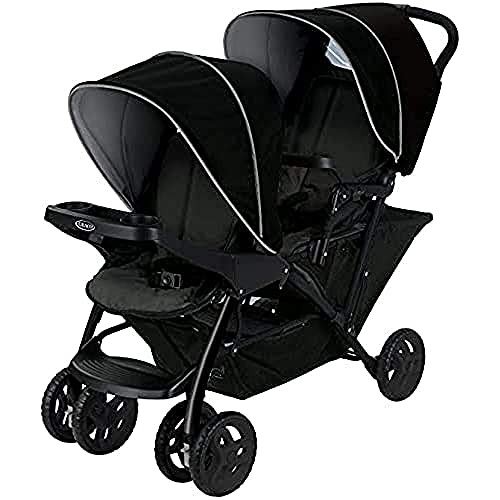Understanding Prams and Pushchairs: A Comprehensive Guide
When getting in the world of being a parent, among the most essential decisions to make involves picking the right devices for transporting a newborn or toddler. Amongst the top contenders for this purpose are prams and pushchairs. Both serve the fundamental function of helping parents and caretakers carry their kids conveniently, but they have distinct functions, benefits, and use cases that set them apart. This post intends to explore prams and pushchairs in-depth, assisting prospective purchasers through their necessary distinctions, benefits, and features, and addressing frequently asked questions.
What is a Pram?
A pram, short for "perambulator," is a type of car created particularly for infants. It features a completely reclining seat or bassinet, so a baby can lie flat while being carried. This is especially essential for newborns whose spinal columns are still developing. Prams typically have larger wheels, providing a smoother trip on different terrains.
Key Features of Prams:
- Fully Reclining Seat: Allowing babies to lie flat.
- Bassinet Design: Some designs include a removable bassinet.
- Roomy Interior: Adequate space for the kid to move comfortably.
- Robust Frame: Designed to be more steady, preferably suited for urban and rural locations.
Advantages of Prams:
- Comfort: Provide a relaxing space for the baby.
- Flexibility: Many can be transformed to a pushchair as the child grows.
- Stability: Larger wheels and frames provide higher stability, particularly on unequal surface.
What is a Pushchair?
A pushchair is a light-weight alternative frequently used for toddlers. Unlike prams, pushchairs usually feature a seat that can sit upright and may not provide a totally reclining alternative, making them ideal for older babies who can support their heads and necks. Pram To Stroller of modern pushchairs come with numerous features tailored towards benefit for the moms and dad and convenience for the child.
Key Features of Pushchairs:
- Multi-position Seats: Can deal with sitting upright or reclining choices.
- Light-weight Design: Easier to bring and maneuver.
- Foldable Framework: Often fold up compactly for easy storage and transportation.
- Larger Storage Baskets: Convenient for bring baby fundamentals.
Advantages of Pushchairs:
- Lightweight and Portability: Easy to transfer and keep.
- Steerability: Smaller wheels enable sharper turns.
- Accessibility: Easier access to older young children.
Key Differences Between Prams and Pushchairs
| Feature | Pram | Pushchair |
|---|---|---|
| Age Recommendation | Newborn to 6 months | 6 months to 4 years |
| Seat Position | Totally reclined | Multi-position |
| Weight | Heavier | Light-weight |
| Surface Usage | Suitable for all surfaces | Best for city/urban environments |
| Size | Larger, bulkier | Compact, simple to fold |
Selecting the Right Option for Your Needs
The choice to choose in between a pram and a pushchair mostly depends on your specific lifestyle and your child's age. Here is a breakdown of factors to consider to help limit the alternatives:
Considerations for Prams:
- If you reside in a backwoods with rough surface, a durable pram might be more appropriate.
- If you prepare to utilize it for long walks or outings, the comfort of a pram can be helpful.
- Ideal for moms and dads who want a design that will conveniently support a newborn.
Considerations for Pushchairs:
- If you need something light-weight for city living or public transport, a pushchair may be a better fit.
- For moms and dads who want a versatile option for toddlers with numerous position settings.
- If storage area is an issue, the compact nature of pushchairs offers a solution.
Common FAQs
1. Can you utilize a pushchair for a newborn?
While lots of modern pushchairs provide reclining seats that can be utilized for newborns, it's typically advised to use a pram or a pushchair with a bassinet choice for sufficient assistance.
2. For how long can you use a pram or a pushchair?
Prams are usually used for infants up to 6 months, while pushchairs can be ideal for children approximately four years or more, depending upon the design.
3. Are prams more pricey than pushchairs?
Prams are often pricier due to their style, flexibility, and products. However, costs can vary commonly depending upon brand, features, and age suggestions.
4. Is it necessary to have both a pram and a pushchair?
Not necessarily. Many moms and dads go with a 2-in-1 system that combines both functions, enabling them to adapt as their kid grows.
5. What should I prioritize in choosing one?
Prioritize safety features, convenience, weight, size, and how well it fits into your lifestyle. Read evaluations, and test drive various designs when possible.
Choosing in between a pram and a pushchair is an important decision for new moms and dads and caretakers. Both choices have unique features that cater to different age varieties and way of lives. By understanding these vital differences, advantages, and recommendations, moms and dads can make a more educated choice that satisfies their family's needs. Whether starting a leisurely walk in the park or browsing the hustle and bustle of city streets, the best pram or pushchair can boost the experience, providing safety and comfort for both the kid and the caregiver.

